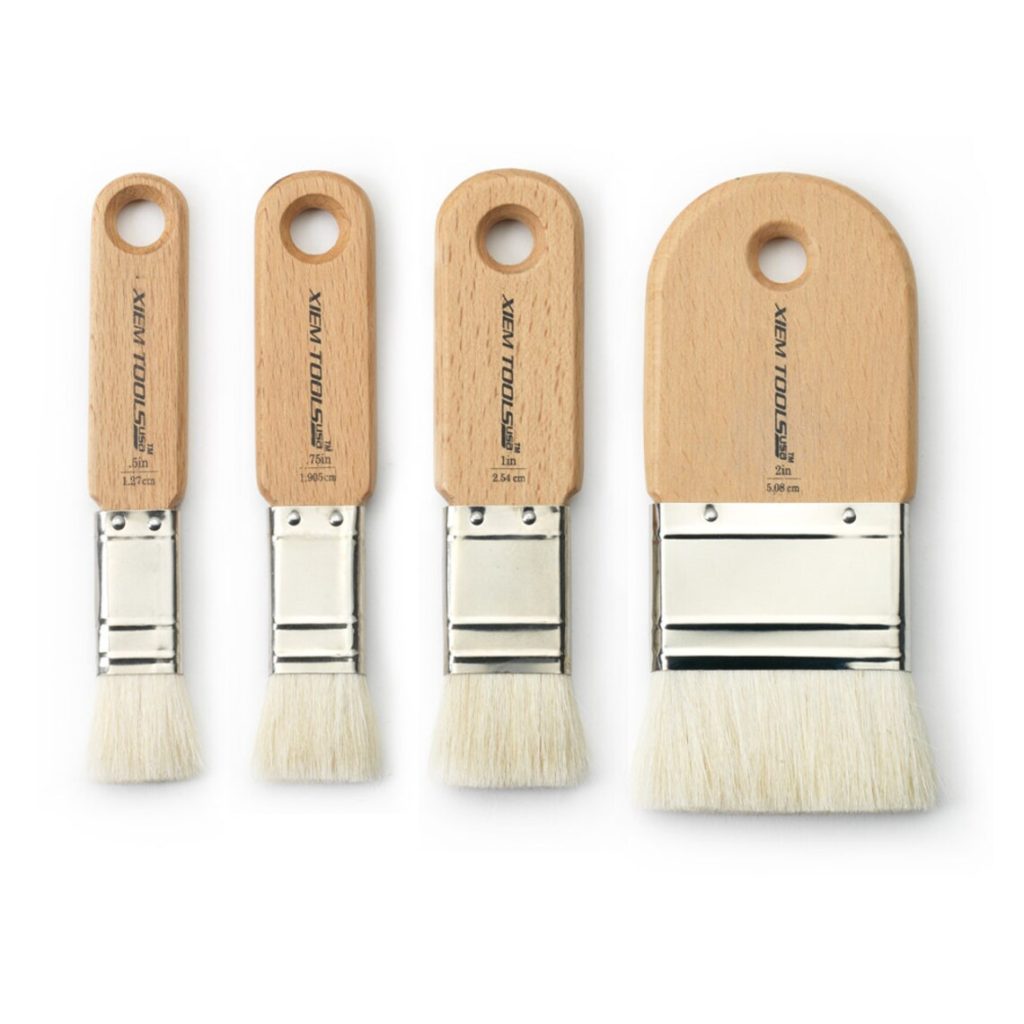Setting up a home pottery studio is a huge investment, but it will last for many years once you have the right tools and equipment!
If you’re a hobbyist, a simple pottery studio with a pottery wheel, worktable, and storage will do. But for a serious potter, a pottery studio will need more equipment.
The good thing here is you won’t need to spend extra on finding a studio in a perfect location. You can set up your pottery studio in the comfort of your home!
In this article, we will be discussing how you can set up your pottery studio according to your needs.
What You Should Consider
We know how exciting it is to invest in a pottery studio. However, before purchasing any tools and equipment, consider these factors first:
Total Cost
When planning a home pottery studio, the first thing that will come to your mind is its cost. There are a few things that you should consider.
Do you need a wheel throw, or will you do it by hand? Will you glaze your pottery in your studio? How much space do you need? Do you have a good water supply and drainage?
The total cost will depend on your needs and preferences. Don’t forget the tools and equipment that you will need.
Shelves and Storage Space
Once you’re already done with your workpiece, you need to store them before firing or glazing them. A simple wooden shelf will help in keeping your work area organized and tidy.
Just make sure to keep finished products away from the pots that need to be fired or glazed. By doing so, ceramics won’t get tampered with.
If you have ample space for your pottery studio, you should consider adding clay and tools storage. A 3-Tier Metal Utility Rolling Cart where you can keep your bats and tools works perfectly fine!
Flooring
When it comes to planning and designing your home pottery studio, flooring should be a priority. The right flooring should be hard, durable, easy to clean, and can handle being exposed to water. Ideal floorings are polished concrete, vinyl, or linoleum.
One more thing, avoid carpeting! It will be tough to clean, and it collects dust, dirt, and other elements.
Power Supply
I can’t think of a workspace that doesn’t need electricity, even if it’s just for lighting. You will need enough outlets for tools such as a pottery wheel, drill, kiln, or heat gun.
You might be thinking about using power strips or extensions. However, it is best to avoid these since they are tripping hazards.
Water Supply and Drainage
Don’t forget about water supply and drainage! You need to have a decent water supply to keep to fulfill your desired consistency of the clay and to keep your pottery studio clean.
You also need to consider drainage. You should never dispose of glaze or clay on the drain because it will stick in your pipes and eventually clog them. A solution to the problem is to purchase this Gleco Trap System to prevent glaze and clay from clogging your pipes.
Air Filtration
Air filtration is crucial in a home pottery studio. Dust, earthy sediments, toxic fumes produced by glaze, and other particles are produced when working with clay blocks.
Air pollutants are difficult to avoid in pottery. Although good ventilation will increase airflow and circulation in the studio, it is not enough to eliminate toxins in the air.
To achieve better air filtration, including a portable air purifier will do the trick! One of the most recommended is the Kokofit KJ510B Air Purifier that can eliminate up to 99.97% of dust, smoke, allergens, odors, and other elements.
Planning the Space You Need
Setting up a home pottery studio can be overwhelming. Your workspace should be able to accommodate your worktable, pottery wheel, kiln, and storage.
A garage or spare room can be turned into a pottery studio. You can adjust your desired pottery studio depending on how much space you have.
Another thing you should consider is the quality of the room or area where you will store your pottery. An ideal pottery studio should be:
- Humid
- Damp
- Preferably Dark
- Encased
Pottery Equipment
The crucial step in setting up a home pottery studio is to get the right equipment and tools. Before investing in equipment, you need to determine the scale and production of your work.
To get started, you will need this equipment:
Clay
Clay is the most essential material in a pottery studio. Clay can be shaped when wet. It is made up of tiny rocks, sand, and other natural components of soil.
Clay comes in different colors and textures depending on the composition and size of the particles.
In pottery, we use three different types of clays—porcelain, stoneware, and earthenware clays. They differ in firing temperature, shrinkage percentages, and water absorption.
For beginners, we recommend stoneware clay. It’s easy to work with and the most versatile among the types of clays. Its color is usually white to dark brown.
Stoneware doesn’t need to be glazed once fired because it is non-porous.
On the other hand, earthenware is thicker and heavier. However, it is weaker than stoneware clay. Earthenware is easy to work with, but If you prefer permeable pottery, you will need extra materials and patience because it needs to be glazed.
Porcelain clay is difficult to work with and requires lots of practice. You need to gradually add water while shaping it, or else it will dry out quickly. Adding too much water will ruin its shape.
Pottery Wheel
Pottery wheels have been a staple in the history of potting. It can be manual, traditional handwheel or electric-powered. Molding clay has become easier and more efficient with this equipment.
The right pottery wheel will depend on your production scale. When choosing a pottery wheel, you should consider its motor, reversibility, and brand.
Where you place your pottery wheel is important. For electric-powered wheels, it should be near an outlet.
You should also think about the amount of clay that would splatter around. You might want to consider a little more room for your pottery wheel.
Kilns
Kilns are ovens that dry out clay to turn it into ceramic. Ideally, kilns should be placed near the window or external wall to help with proper ventilation. Kilns can be gas, electric, manual, top load, or front load.
The most popular and affordable type is the top-loading kiln. While front-loading kins are convenient to use, especially for beginners. However, front-loading kilns are more expensive.
Most potters prefer electric kilns because of the high-quality pottery it produces. Convenience is also a significant factor because gas kilns require fire safety permits. One of the advantages of a gas kiln is reduction firing can be achieved.
The kiln’s temperature range will depend on which type of clay you will use. Electric kilns are easy to adjust to fit your needs.
When choosing a kiln, it is crucial to consider the firing temperature. This will depend on what kind of material you’ll be using.
To give you an idea of the temperature ranges, we listed the materials in descending order starting from the highest temperature level requirement:
- Porcelain
- Stoneware
- Earthenware
- Low-Fire Ceramics
Choosing the right kiln will depend on your pottery skills level and workflow. A low-quality kiln can cause explosions, fires, and pottery not being fired correctly. That’s why we recommend you get the best kiln.
Pottery Tools
You can start making pottery with clay, a pottery wheel, and a kiln. However, you may need more tools to help you in creating professional-looking and more precise pieces.
Your pottery home studio should have the following tools:
Scrapers and Ribs
You can use these tools to smoothen or shape pots as you mold them on the pottery’s wheel. Scrapers and ribs can be rubber, metal, or wood. The most popular is the rubber ribs because it’s easy to work with. While the metal scrapers give the smoothest finish.
Potter’s Needle
A potter’s needle is used to trim the top edges neatly while the clay is on the wheel, scoring slabs and coils if molding by hand.
Sponges
A sponge is a must-have tool in any pottery studio. It ensures that you have the right consistency by adding or removing water from the clay. You can use sponges from shaping to smoothening your clay. It can also be used to remove glaze on the foot of your pots.
Potter’s Calipers
Calipers are used to measure the dimension of the pieces that will meet other parts of the set. For example, you can use a caliper in measuring the lids of a jar to make sure it will fit the dimensions of its opening.
Turntable or Banding Wheel
A turntable is used for carving, decorating, sculpting, and glazing. Putting your workpiece on the turntable or banding wheel will make it easier for you to work on it without moving the workpiece around with your hands.
Brushes

Brushes are used to apply underglaze and glaze to your pots. You can also use a brush to apply water to specific areas while you are molding them.
We recommend purchasing brushes in sets because the size of your pottery will also depend on which size of the brush to use.
Potter’s Knives
Potter’s knives have thin blades that can be flexible or hard temper. They are used for trimming thrown pots or slabs. It is also used in cutting when hand-building ceramics.
Conclusion
Now that you have an idea of how to start a home pottery studio, it is important to know if you’re serious about pottery since it is a big investment. If you’ve been working on pottery for several years, you wouldn’t want to drive to the studio every day, right?







